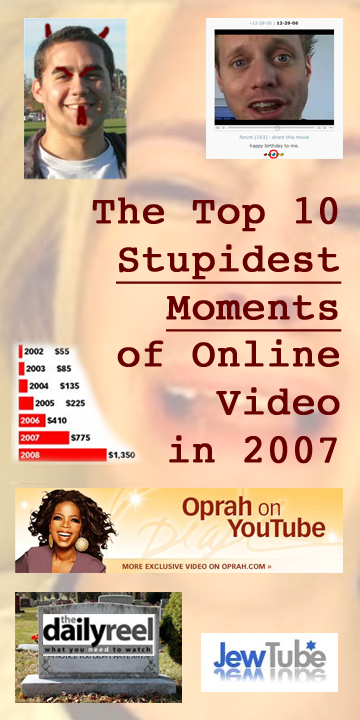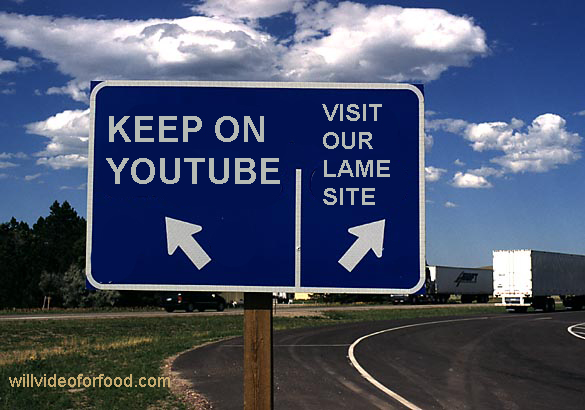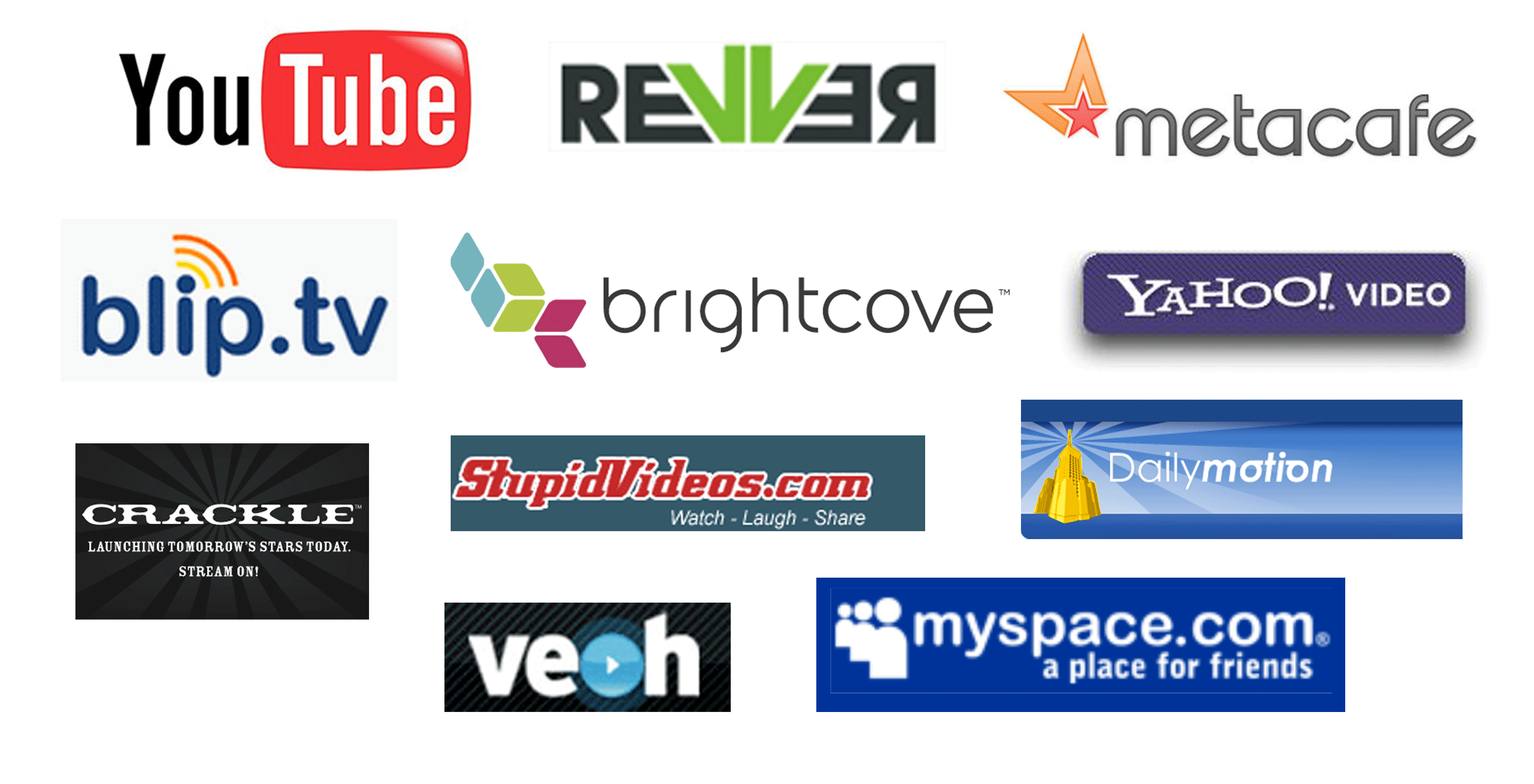It’s time for the first annual WillVideoforFood.com’s Top 10 Stupidest Moments of Online Video in 2007. This list is my first draft, so I invite and encourage moments I’ve no doubt missed.
I haven’t kept a notepad besides my bed all year, and I try to suppress these moments. That said, I did review hundreds of blog entries and perform countless Google searches to compile this starter list. Feel free to use all or parts of this post on your blog or website- link appreciated.
- Chris Crocker becomes a viral sensation after this weeping video defending Britney Spears. It gets 13 million views, but Crocker fails to post another video in the three months since. Lesson: It’s not the one-hit wonder, it’s about consistency. To his credit, he’s another video amateur that is “working on a TV show,” he’s been spotted at Social, and he did make Time Magazine’s top 10 list of viral videos.
- YouAre.tv gives up, and embarrasses itself while trying to hype its own auction (with a paltry 2,000 visitors per day) on eBay. To add insult to injury, it sends an “exclusive” report to New Tee Vee, but accidentally sends it to The Silicon Valley Insider (who promptly publishes the entire desperate e-mail from You Are Media CEO David K. Dundas). Lesson: Don’t start another video site, and check e-mail when you leak exclusives.
 Sneeeer: Techcrunch publishes “The Secret Strategies Behind Many Viral Videos,” which leads to a dramatic backlash among online-video enthusiasts, bloggers and the video community. I parked “ViralVideoVillain.com” for TechCrunch contributing author Michael Ackerman Greenberg. TechCrunch does a “follow up.” Lesson: There are appropriate ways to market your videos, and cheats don’t need a soap box.
Sneeeer: Techcrunch publishes “The Secret Strategies Behind Many Viral Videos,” which leads to a dramatic backlash among online-video enthusiasts, bloggers and the video community. I parked “ViralVideoVillain.com” for TechCrunch contributing author Michael Ackerman Greenberg. TechCrunch does a “follow up.” Lesson: There are appropriate ways to market your videos, and cheats don’t need a soap box. - Oprah makes her debut on YouTube by taking over the homepage with online-video clichés (dog on skateboard, cats doing tricks), then creating a YouTube channel that looks more like a network PR site. Lesson: Too many for this post. See previous post about what Oprah might have learned.
- JewTube launches in the summer, and Google later challenges the name (based on copyright infringement of YouTube). Lesson: Niche sites are smart. But build your own brand.
- The Daily Reel dies after morphing from “Entertainment Weekly for online video” to a video podcast series to a video-hosting site to a video-enthusiast community site to a site thats’ now frozen in time like some parts of New Orleans years after Katrina. Lesson: Pick a core competency and stick with it.
- ZeFrank killed his popular online-video show in March, just as his fame was developing. He quietly returned to blip.tv recently, but not on his ZeFrank “The Show” page. NewTeeVee writer Chris Albrecht called his return video “anemic” with a “spark missing.” There were rumors of a television deal, and blip.tv issued this press release when he closed The Show. We won’t comment, as we have a documented history of being jealous of ZeFrank (as “caught on tape” with this Dove Evolution parody). Lesson: Stick with what you do well. And I’m not saying there’s a “Famous Amos” thing happening here, but why else wouldn’t ZeFrank populate his show page in addition to blip.tv?
- The New York Times calls YouTube “celebrities” hot property. Umm… I’m kinda a big deal on YouTube, but someone show me how the YouTube thing has changed more than a couple lives. Lesson: The “overnight” success of online-video amateurs is a bit exaggerated.
- Experts project that television advertising budgets will pour online. Experts project 3/4 of a billion dollars in online video for 2007. Even so, that’s a small portion of the 3-8 billion expected to go into online advertising in total this year. No word yet as to how the year’s shaping up (but eMarketers upped its estimate in August). I didn’t get my share of 3/4 billion, though. Did you? Lesson: Take advertising projections and divide by 10.
- Viacom demands YouTube remove all of its content and tries to build an “old media consortium” to compete with YouTube (Viacom, News Corp and NBC ). Writers who are on strike find this move, in hindsight, quite ironic (see recent video by Daily Show writers). Naturally, media executives come to Viacom’s defense. Lesson: as I mentioned in March, that old “the enemy of my enemy is my friend” consortium thing never quite works out (see ComScore reports of online-video share). Still, you can’t blame someone from crying fowl about having their stuff stolen and monetized by someone else online. Unless they’re a writer, of course.














